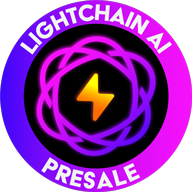
It’s hard to believe Bitcoin Ordinals is little more than a year old. Launched on January 20, 2023, the protocol brought NFTs to the Bitcoin Network for the first time, enabling users to make ‘inscriptions’ on the currency’s smallest unit, the humble satoshi. With 100 million satoshis per bitcoin, and some 19.6 million BTC already in circulation, a fertile NFT market was created overnight.
But the Cambrian explosion of creativity that followed the arrival of Ordinals has not put a smile on everyone’s face. While many users welcomed the chance to embed data like videos, images, and text onto satoshis, others said the surge in network activity (and what they derided as digital spam) hurt Bitcoin, with concerns mostly centered on scalability, environmental impact, and UX.
Thankfully, a number of solutions have started to emerge.
Bitcoin NFTs Resurrect Familiar Concerns
Bitcoin Ordinals was one of crypto’s biggest success stories of 2023, more or less single-handedly turning Bitcoin into one of the most-used blockchains for NFT minting and trade. According to Dune Analytics, there have been 60.2 million inscriptions made so far, with fees linked to Ordinals totaling 6,147 BTC (over $300 million).
Such heightened activity is of course testament to the growing interest in utilizing Bitcoin beyond its traditional role as a digital currency. The ability to create Bitcoin-based NFTs has opened up new avenues for artists, creators, and collectors within the Bitcoin ecosystem, though these fresh use-cases throw up a very familiar set of challenges.
One of the most pressing issues is network congestion. Ordinals-inspired transaction volumes have made transactions on the network more expensive not to mention slower to settle. This not only affects the efficiency of Bitcoin transactions, but also raises concerns about the network’s scalability as it struggles to cope with growing demand. Blockworks data suggests average BTC transaction fees soared upwards of 25x during Ordinals’ first year!
Anyone who has spent time in the Bitcoin ecosystem will be familiar with criticisms relating to the Proof-of-Work network’s environmental impact. While such opprobrium often overlooks the high proportion of miners using renewable energy in their matrix, it’s true there is an environmental cost to running the network. Whatever way you cut it, BTC mining is an energy-intensive process, a bit like gold mining. Thus, a common criticism aimed at Ordinals is that in bringing NFTs to Bitcoin, it has exacerbated these long-standing eoc issues.
Interestingly, beyond its environmental impact, Ordinals’ success has spawned new markets – evidenced by Binance’s listing of BRC-20 SATS and support for trading pairs like 1000SATS/USDT. Thus, Ordinals should be taken more seriously than as a vehicle for writing jokes on satoshis: it’s created a whole new investment frontier while resurrecting a familiar challenge.
The Necessity of Change
To support the growth of both Bitcoin and Bitcoin Ordinals, addressing such challenges is vital. Solutions that enhance transaction efficiency, reduce environmental impact, and improve UX are required in order for Bitcoin to continue winning hearts and minds.
Innovation being at the heart of the Web3 world, solutions have not been long in coming to the fore. Earth Wallet, for example, has designed a Layer-2 scaling solution known as the Bitcoin Social Network. Essentially, the BSN allows for the movement of Ordinals media off the main chain and into the Nostr protocol. This integration, achieved through Bitcoin staking, has the potential to significantly enhance transaction efficiency: Earth Wallet aims to reduce transaction fees to <1 sats/byte, finality to <1 minute, and energy consumption by 99.9%.
Another innovation, the STX20 protocol, arrived on Bitcoin L2 network Stacks in December. This one seeks to replicate Ordinals’ success in an L2 environment to lighten the load on the main Bitcoin chain. Thanks to Stacks, satoshi-NFTs can be processed more efficiently, with transactions processed 30x faster and Stacks able to keep transaction costs to a minimum.
Ordinals aside, Bitcoin’s Layer-2 ecosystem is thriving thanks to the success of projects like Stacks, the Lightning Network payment protocol, Liquid sidechain, and L2 virtual machine Rootstock (RSK).
Looking Ahead
Bitcoin Ordinals has changed the game – it’s just that some people think it’s had a net-negative effect while others sing its praises. Whatever camp you fall into, the challenges it presents must be tackled head-on.
While the surge in popularity of Bitcoin-based NFTs highlights the versatility and potential of Bitcoin, it also underscores the need for sustainable and scalable solutions. Luckily, enterprising blockchain technologists are busy building solutions in the form of L2s and the dApps deployed on them.
As Bitcoin adoption continues to grow, the community’s focus on addressing scalability and environmental concerns will be imperative for its long-term success. Innovations like Earth Wallet’s Bitcoin Social Network and the Lightning Network are leading the way, showcasing the ingenuity of those operating at the front-lines of the Bitcoin battleground.





























